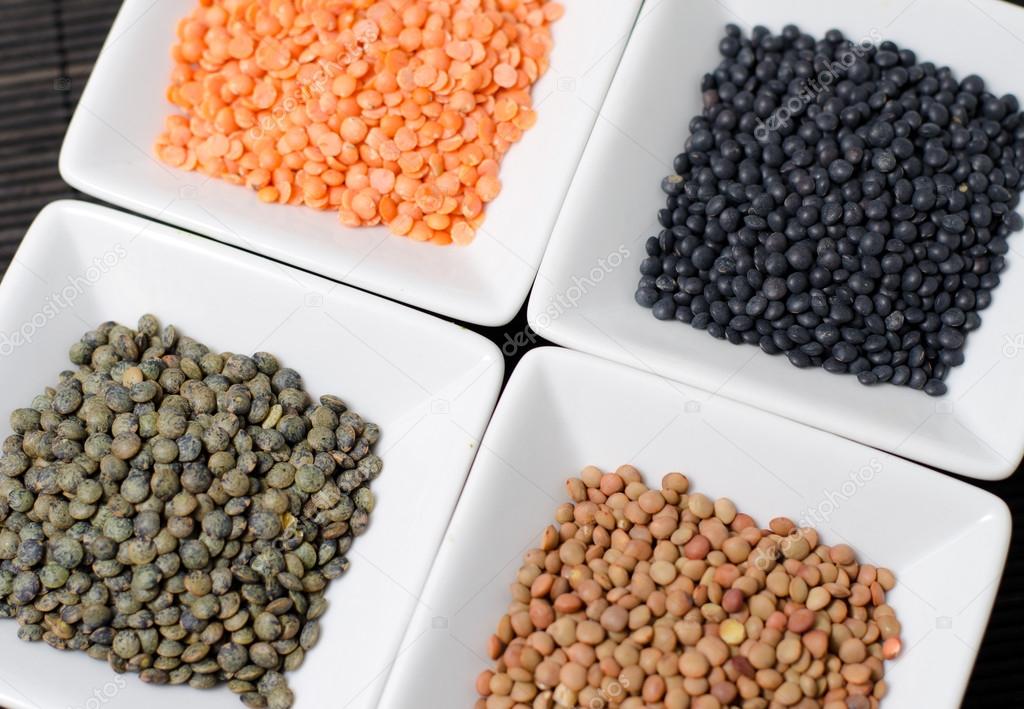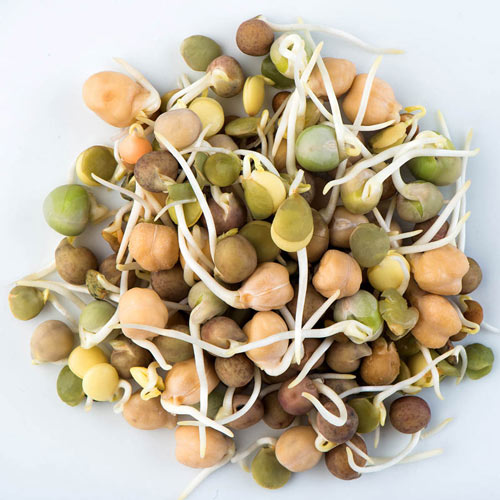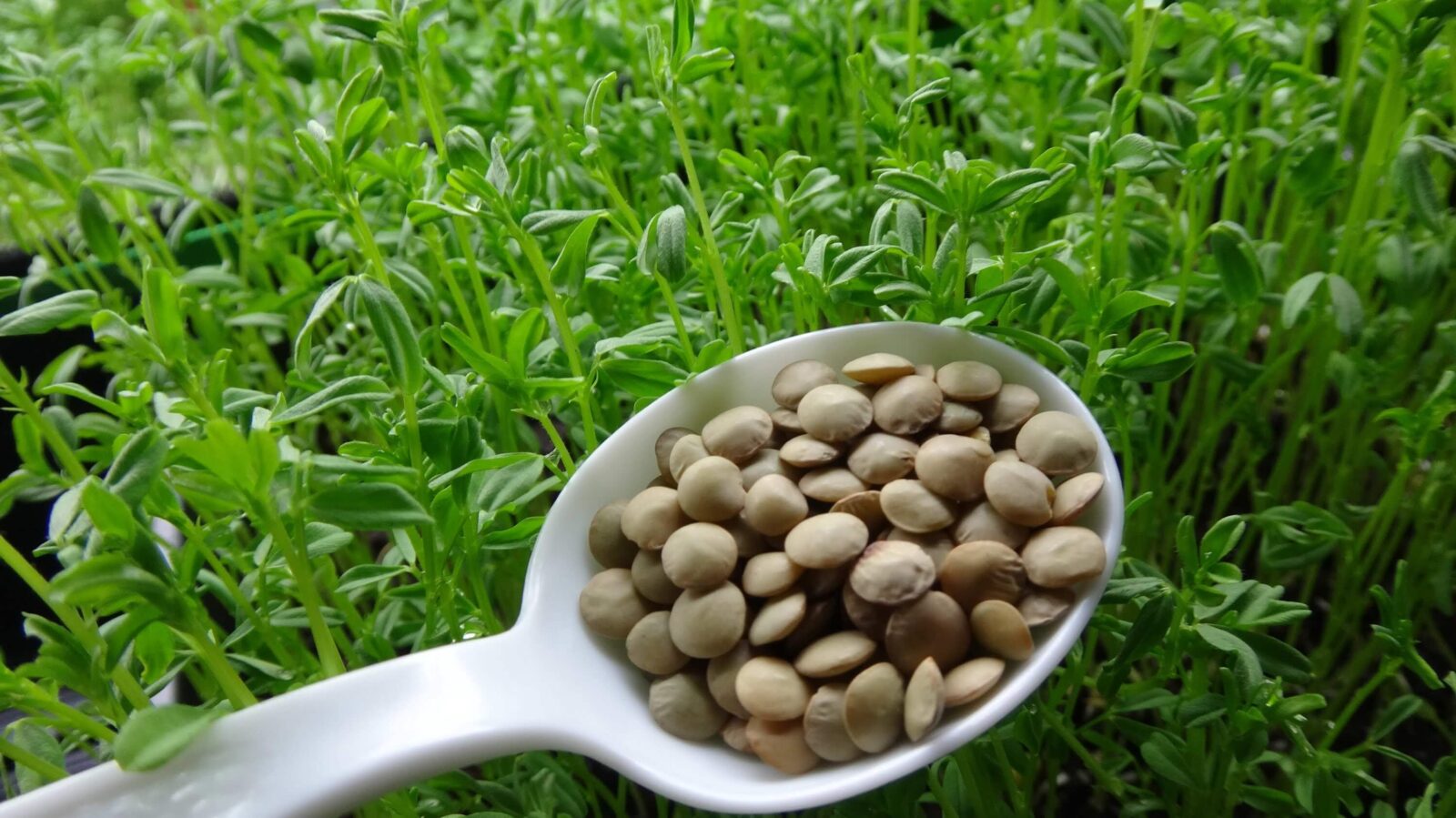What are Lentils?
Lentils are believed to be one of the first agricultural crops. They were grown more than 8,000 years ago.
Lentils are grouped with beans and peas as part of the legume family. Lentils, similar to all legumes, grow in pods. They are high in protein and fiber and low in fat and calories. This is what makes them a healthy substitute for meat. They’re also packed with folate, iron, phosphorus, potassium, and fiber.
A single serving of lentils meets 32% of the fiber you need each day. It can lower cholesterol and protect against diabetes and colon cancer. A daily dose of fiber aids in balancing your digestive system.
A study from the University of Guelph in Ontario, Canada that appears in the Journal of Nutrition shows that replacing half of the available carbohydrates from potatoes or rice with cooked lentils can lower blood glucose levels by more than 20% in healthy adults. Lentils can significantly reduce blood glucose.
What Color Lentil is Best?

Lentils come in the following colors: brown, green, yellow (or gold), red, and black.
Brown Lentils
Brown Lentils are the most common lentil variety. They have a mild, earthy flavor. They cook in about 20 to 30 minutes and hold their shape very well. Common varieties are Spanish Brown, German Brown, or Indian Brown.
The blackest and tiniest lentils you find are usually Beluga lentils, which have a rich and deeply earthy flavor. Black Lentils are the most nutritious variety of lentils. One-half cup of uncooked black lentils provides 26g protein, 18g fiber, 100mg calcium, 8mg iron, and 960mg potassium, according to the USDA.
Green Lentils
Green Lentils can be pale or mottled green-brown in color with a glossy exterior. They have a robust, peppery flavor. Green lentils generally take the longest to cook, upwards of 45 minutes, but they keep a firm texture even after cooking. This makes them ideal for salads and other side dishes.
Red & Golden Lentils
Red and golden lentils are the sweetest and nuttiest. They cook in about 30 minutes. They tend to get mushy when cooked through, so they’re perfect for Indian dals and other curries, or for thickening soups.
How do Lentils Grow?
Lentils grow in pods. There are between one to three lentils per pod. When ready, lentils are harvested in their dry form typically in mid-August.
Lentils grow well in limited rainfall areas of the world. Lentils are more widely grown throughout Europe, Asia, and North Africa. In North America, lentils grow mainly in eastern Washington, northern Idaho, and western Canada where there are drier growing seasons. They have been grown in these areas since the 1930s, rotating with wheat.
Many legumes, like peanuts, grow their pods underground like most forage legumes. Other legumes, like green beans and peas, grow their pods above ground on vines. The plant that grows lentils is a bushy, annual plant that also grows its pods above ground.
Tips for Growing Lentils
Lentils grow best in deep, sandy loam soils. However, they will grow in all soil types with good drainage. Loam soil is composed of almost equal amounts of sand and silt with a little less clay. Lentils and buckwheat are great companion plants as well as nitrogen fixers and soil improvers. Plant lentils with potatoes, cucumbers, and/or summer savory. Avoid planting lentils with onions or garlic.
Lentils grow on sparsely branched vines from 18 to 24 inches tall. The lentil has small whitish to light purple pea-like flowers. Lentils flower from the lower branches and up until harvest. Each flower produces a short pod that contains 1-3 seeds.
When to Sow Lentils
Lentils are a cool-season legume. Sow lentils in the spring as early as 2 weeks before the average last frost date. Lentils can be started indoors before transplanting to the garden. Lentil seeds will germinate in 10 days at 68°F. Lentils require 80 to 110 days until harvest.
Lentils need full sun areas. They prefer loose, well-drained soil that is rich in organic matter. They grow best in soil with a pH between 6.0 and 6.5.
Sow lentil seeds 1 t0 1½ inches deep, deeper if the soil is dry and space seeds 1 inch apart. Space rows 18 to 24 inches apart. Keep the soil where lentils grow evenly moist. Do not water lentils once pods have begun to dry near harvest time. Add compost tea when lentil plants are 5 inches tall and again at flowering.
Support lentils with a low trellis. Without a trellis, lentils should be set 5 inches apart to ensure ample air circulation. Protect early crops from pests and frost with row covers. Lentils do not compete well with weeds. Protect lentil plants from wind.
Lentils can be grown in containers, but several plants are required for a practical yield. Grow plants in pots at least 8 inches deep.
What May Impact Your Lentil Crop?
Aphids may attack lentils. Control aphids by pinching out infested areas or hose them off of the plant with a blast of water. Weevils may attack lentils. Remove and destroy infested plants. Rotate crops to avoid repeat infestations. Other pests that may attack lentils are thrips, Lygus bugs, seedcorn maggots, and wireworms. Lentils have no serious disease problems. Mildew may attack lentils that are too closely planted.
Harvesting Lentils
Harvest lentils when the plant begin to turn yellow and the pods become brown. Lentils are commonly used as dry beans or peas. For dried seeds, harvest pods when they have matured and hardened. Leave lentils unshelled until you are ready to use them. Dried lentils are ready for harvest 110 days after sowing.
Eating Lentils
Lentils can be eaten raw, which adds a nice crunch to your dish. You can blanch lentils for a minute to soften them both in texture and in taste. Here are a few more ways to use lentils in your meals:
Boil
The simplest way to cook lentils is to boil them. Since lentils soak up a lot of flavor while cooking, it is best to add flavor while boiling.
Add to Salad
Add protein to any salad. To do this, cook the lentils using the boiling method until nearly cooked. Then add the lentils to your dressing. It will soak up the dressing.
Sprouting Lentils
See below for details on sprouting lentils.
Stuffing & Thickner
Lentils are a great replacement for creating stuffing. They are a great vegan solution for recipes that use meat. You can mash or puree them. If you want to create your own vegan burger, lentils make a great addition.
Soups & Curry Recipes
Our Kale Lentil Soup makes a delicious vegan meal. This soup can be used as a topping on a sweet potato, chicken, or with a delicious piece of sprouted wheat or multi-grain bread! One curry recipe uses red lentils flavored with a mixture of turmeric, paprika, cumin, fresh ginger, and garlic- the perfect mix of spice!
Sprouting Lentils

Lentils contain phytic acid, which can be difficult to digest. Phytic acid is a unique natural substance found in plant seeds. It has an impact on mineral absorption. Phytic acid impairs the absorption of iron, zinc, and calcium and may promote mineral deficiencies. It is sometimes referred to as an anti-nutrient.
By sprouting lentils, it neutralizes the phytic acid so more vitamins and minerals can be absorbed by your body as they’re digested.
When you sprout lentils, you’re actually starting the germination process, which changes the composition of the lentils. Sprouting increases the amounts of vitamins and minerals in the lentils, especially B vitamins and carotene. Sprouting produces Vitamin C. Like many legumes, lentils have sugars that create intestinal gas. Sprouting helps break down some of those sugars.
How to Sprout Lentils (from The Lean Green Bean)
- Put the dry lentils in a jar. Add water and let sit overnight. Remember that the lentils will eventually almost triple in size so be sure your container is big enough. Use about 2/3 cup dry lentils in a 1-quart mason jar and add about 2 cups water. Don’t put an airtight lid on the jar. Use a piece of thin cloth and secure it with the ring part of the jar top.
- Drain the water out of the jar, replace the cloth, and let the jar sit on the counter, out of direct sunlight. Every 12 hours, add water to the jar, give it a swirl, and then drain it out again.
- You will start seeing little tails in 24-36 hours and it may take up to 4 days.
- When they’re done, spread them on a paper towel to let them dry out a little bit, then store them in an airtight container in the fridge.
- You can eat the sprouted lentils plain for a snack, use them as a salad topping, or add them to whatever dish you would add non-sprouted lentils to when you’re cooking.
I happen to love lentils and find that they are a great ingredient for a plant-based lifestyle. But I did not know much about growing lentils before writing this blog. I am definitely going to attempt to grow some lentils this season! Will you join me?
